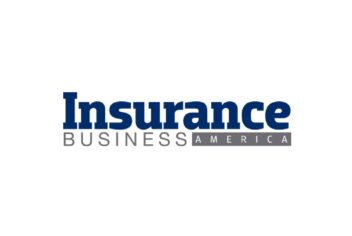A picture is worth a thousand words. But what do you do when the “free” pictures you downloaded from Google turn out to cost your nonprofit thousands of dollars?
It’s often an innocent mistake, but any time your nonprofit uses copyrighted material — images, characters, logos, etc. — without permission or license, your organization risks a potentially costly lawsuit for copyright infringement.
In fact, there’s an entire industry of copyright experts that do nothing but scour the internet for unauthorized use of copyrighted materials and then threaten lawsuits and demand payment — and nonprofits are fair game to them.
While insurance can help with your legal defense against infringement allegations, it’s a much better idea to explore how your nonprofit can reduce the risks of copyright infringement before it happens.
Let’s look at a real claim NIA received and discuss what the nonprofit did that impacted the outcome of the claim.
The Nonprofit:
This nonprofit has a mission to protect and promote historic sites and other culturally significant landmarks.
The Incident:
For an upcoming children’s event, the nonprofit’s team created promotional materials featuring a cartoon character.
The Legal Action:
One day, nearly a year later, the nonprofit received notice from a copyright watchdog group, alleging that the cartoon character used in the nonprofit’s materials was under copyright and had been used without permission or license. They demanded money and threatened the nonprofit with legal action.
The Result:
The NIA claims examiners were able to review the images in question, and then work to quickly reach a suitable settlement once it was determined that improper use had likely occurred.
What Did the Nonprofit Do Right?
The nonprofit carried a Commercial General Liability (CGL) insurance policy, which enabled NIA to assess the situation and quickly settle it.
What Could the Nonprofit Improve?
Improper use of copyrighted materials is an unforced error that no nonprofit can afford to make. For this nonprofit, these additional steps may have helped result in a better outcome, or helped prevent the incident altogether:
- Adopting practices to ensure that all materials were used with license/permission, generated in-house, or fell under the public domain before publication.
- Ensuring that all staff members knew the appropriate procedures when sourcing and using outside materials.
- Obtaining, and documenting, written permission from all copyright owners.
- Conducting regular training and refreshers for staff around copyrights and proper usage.
- Designating a final approver to review all materials to ensure appropriate oversight/compliance.
How Can Your Nonprofit Avoid This?
Copyright watchdogs are ruthless, out for an easy payday, and very knowledgeable about copyright law. So, if your nonprofit’s handling of outside-sourced intellectual property is anything less than airtight, you may not have much in the way of recourse should one decide to come after your organization.
A defense that you are just a small nonprofit or that your staff didn’t know they were breaking the law will not work.
Protecting yourself means establishing organizational practices to ensure all the materials you publish are sourced correctly — before it goes out to the public. These can include:
- Never copy and paste images directly from search engines or websites.
- Remember: Simply citing sources does not equal permission.
- Subscribe to a stock service that licenses photos, graphics, and other materials for publication.
- Assume all outside materials are copyrighted.
- When using anything you didn’t make, obtain written permission from the copyright owner(s).
- Create images, graphics, and photos in-house whenever possible.
- Train your staff around appropriate image usage and sourcing.
- Update your editorial process to confirm permissions/licenses for all materials used.
- Document everything: Keep records of all licenses and permissions.
- Periodically review your practices with copyright law professionals.
- Take advantage of copyright webinars.
- Never assume that, because you’re a nonprofit, copyright attorneys won’t come after you.
Conclusion
It’s important to understand that nonprofits are not exempt from copyright, trademark, and intellectual property laws — no matter how worthy your nonprofit’s cause may be.
Protecting your nonprofit from copyright infringement allegations means you’ve got to be meticulous and purposeful about where your visual materials come from, how your team uses them, and whether you can prove that you’re allowed to use them in the first place.
Doing this will help your nonprofit avoid unnecessary risks, costly litigation, and enable your published materials to serve and inspire your community for years to come, worry-free!
For a deeper dive: RiskBits: Using ‘Free’ Photos from the Internet Can Cause Legal Problems for Your Nonprofit
From the Claims Files stories like the one above are intended to be informational in nature. Coverage will vary depending on language specific to your policy and your specific facts and circumstances.
Please contact your insurance broker and/or agent for your specific coverage implications based on your specific situation and follow any claims reporting procedures from your policy with your broker if there might be a claim.
Nothing in this story should be considered as legal advice or opinion and you should seek independent advice or legal counsel.





